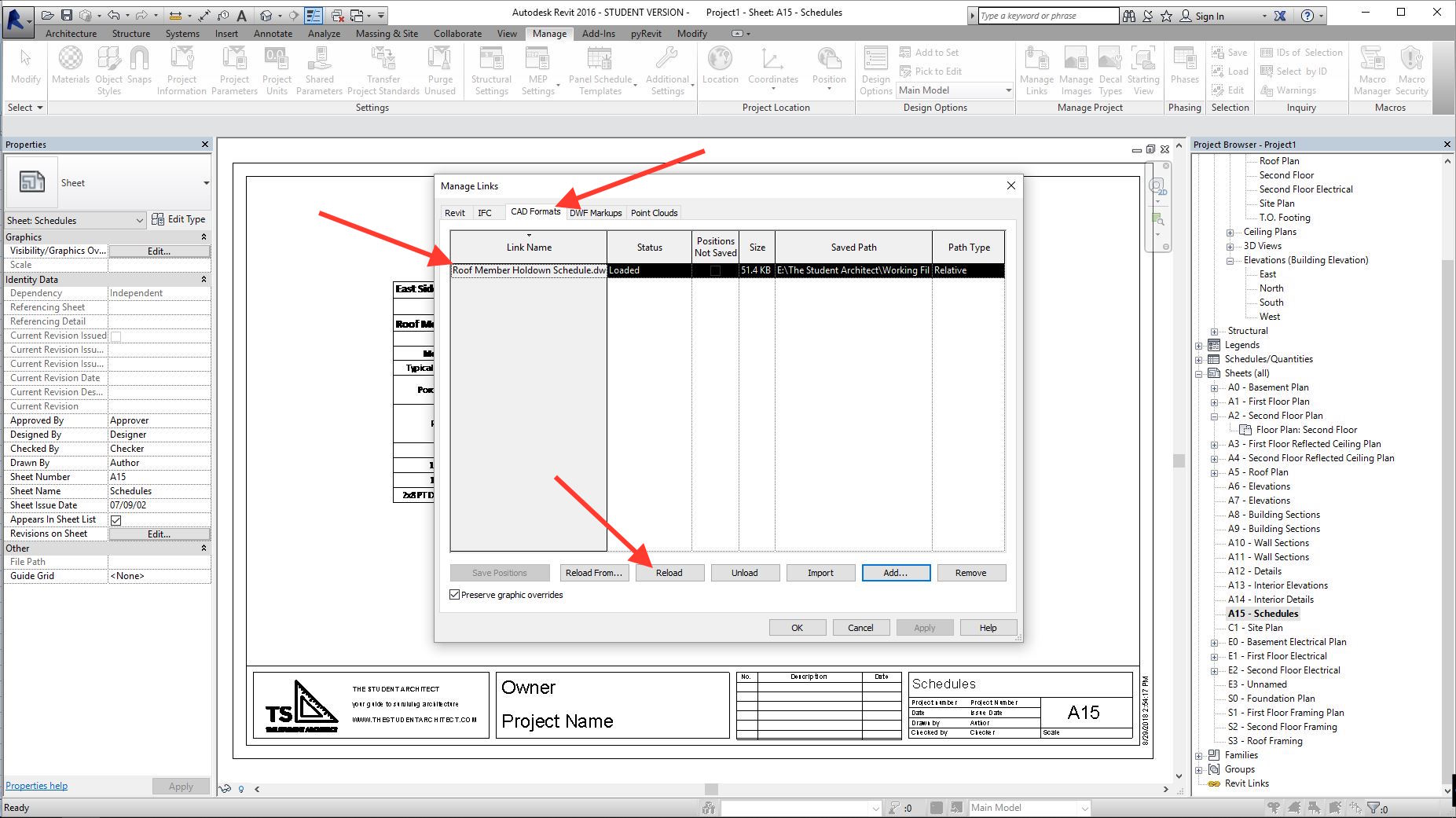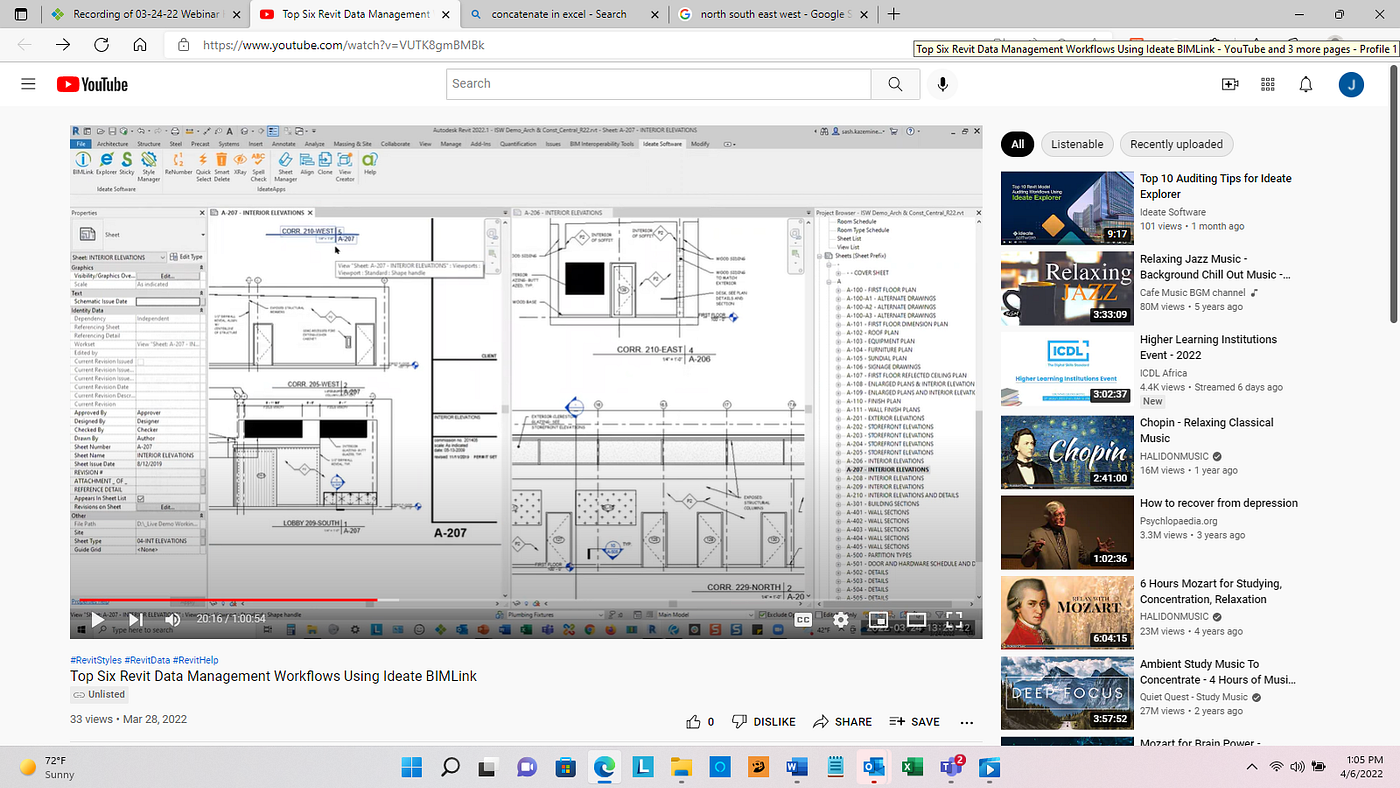Excel-to-Revit: A Game-Changing Operations for Architectural Layout - Unveiling the Secrets
Presenting excel-to-revit, the game-changing workflow that will certainly revolutionize your style procedure. With excel-to-revit assimilation, you can simplify your building style, unlock effectiveness, and make best use of cooperation within your group. Get prepared to take your building style to the next level with excel-to-revit!
The Power of Excel-to-Revit Integration

Imagine the ease of having the ability to modify and update project information in Excel, and instantaneously see those modifications reflected in your Revit version. Say goodbye to hands-on information entrance or tedious updates. With Excel-to-Revit assimilation, you can save time and reduce errors by leveraging the power of Excel's formulas and functions to instantly produce exact data in Revit.
Not only does this integration improve effectiveness, but it also boosts cooperation among team members. You can conveniently share Excel files with coworkers, who can then import the information into their Revit models. This advertises a seamless exchange of info and guarantees that everybody is working with the most up-to-date data.

Improving Building Style With Excel-To-Revit
Enhancing architectural style is made much easier with the usage of Excel-to-Revit (revit tools). With this powerful integration, you can maximize your operations and conserve valuable time throughout the design procedure. By leveraging the capabilities of Excel and Revit, you can effortlessly transfer data between the two systems, eliminating the need for hand-operated information entrance and decreasing the risk of mistakes
Excel-to-Revit enables you to import and export data easily, allowing you to quickly update and modify your architectural layouts. You can develop routines, compute amounts, and produce records in Excel, and then transfer that information straight into your Revit model. This combination makes certain that your design information is always up-to-date and synchronized, eliminating the need for hands-on updates and decreasing the opportunities of disparities.
By utilizing Excel-to-Revit, you can likewise benefit from the effective computational capabilities of Excel. You can carry out intricate calculations, analyze data, and automate recurring tasks, all within Excel. With just a few clicks, you can import the outcomes back into Revit, permitting you to make educated style choices and maximize your architectural styles.
Opening Performance: Exploring the Excel-to-Revit Process
Optimize your productivity by flawlessly incorporating Excel and Revit for a more reliable workflow. With the Excel-to-Revit operations, you can unlock a whole brand-new degree of effectiveness in your building style procedure. By utilizing the power of Excel's information monitoring capacities and combining it with the adaptability and accuracy of Revit, you can improve your design process and save useful time.
Among the crucial advantages of this integration is the capability to import and export information between Excel and Revit. This implies that you can quickly move task information, such as space routines or material amounts, from one software application to the other, getting rid of the demand for manual data access and decreasing the chances of mistakes. You can additionally produce custom-made solutions and computations in Excel to automate repetitive jobs and perform intricate estimations, which can after that be effortlessly integrated right into your Revit designs.
Additionally, the Excel-to-Revit operations permits much better sychronisation and Our site cooperation in between staff member. With Excel acting as a main information center, several staff member can function on various elements of the job simultaneously, sharing and updating info in real-time. This not just enhances interaction but likewise guarantees that every person is dealing with one of the most current information, removing the threat of variances.
Taking Full Advantage Of Cooperation: Excel-to-Revit for Architectural Teams
By seamlessly incorporating Excel and Revit, building groups can greatly improve cooperation and attain extra reliable design end results. When using this effective workflow, you can conveniently transfer information in between Excel spreadsheets and Revit models, improving the layout process and improving interaction amongst group members.
Moreover, by leveraging Excel's effective computation abilities, you can execute intricate estimations and evaluation on your layout data, driving and providing valuable understandings educated decision-making. This combination also allows you to export data from Revit to Excel, allowing you to produce extensive records, charts, and charts for presentations and evaluation. This collective process advertises efficient communication and coordination amongst employee, as Excel functions as a central hub for data management and sharing.
Total, by embracing the Excel-to-Revit operations, architectural teams can accomplish higher degrees of cooperation, efficiency, and precision in their layout process. revit tool. This integration equips groups to collaborate click resources perfectly, guaranteeing that everyone gets on the exact same web page and adding to the success of the job
Introducing the Keys of Excel-to-Revit Combination

One of the keys of Excel-to-Revit assimilation is the capacity to take advantage of the power of solutions and calculations in Excel to drive specifications and produce facility geometries in Revit. You can connect Excel spread sheets to Revit family members, permitting you to input information straight right into the spread sheet and have it instantly update in the Revit design. This simplifies the design procedure and ensures accuracy and consistency across the project.
Another trick is the capacity to create custom schedules and reports in Excel, utilizing information removed from Revit. This permits you to analyze and imagine job info in a method that is not feasible within Revit alone. You can quickly produce quantity take-offs, expense quotes, and job timelines, supplying useful understandings for decision-making and job administration.
In addition, Excel-to-Revit combination enables efficient cooperation among employee. Several individuals can deal with the very same Excel spreadsheet simultaneously, making it easier to work with and track changes. You can additionally use Excel's commenting function to offer feedback or connect layout alterations.
Final Thought
So there you have it, the secrets of excel-to-revit combination have actually been revealed. This game-changing operations has the power to streamline architectural design, unlock effectiveness, and make the most of partnership for building groups. By incorporating the power of Excel and Revit, engineers can currently function more efficiently, conserve time, and produce better designs. So why wait? Start incorporating excel-to-revit integration into your architectural design process today and revolutionize the way you work.
With just a couple of clicks, you can import the outcomes back right into Revit, enabling you to make informed design choices and enhance your architectural designs.
By making use of the power of Excel's information administration capabilities and combining it with the adaptability and accuracy of Revit, you can simplify your style procedure and save valuable time.
By seamlessly incorporating Excel and Revit, architectural groups can greatly enhance cooperation and achieve much more reliable layout end results. When using this powerful workflow, you can easily move information in between Excel spread sheets and Revit designs, enhancing the design procedure and improving interaction among group members.Furthermore, by leveraging Excel's effective estimation capabilities, you can perform complicated computations and evaluation on your design data, driving and providing useful insights educated decision-making.